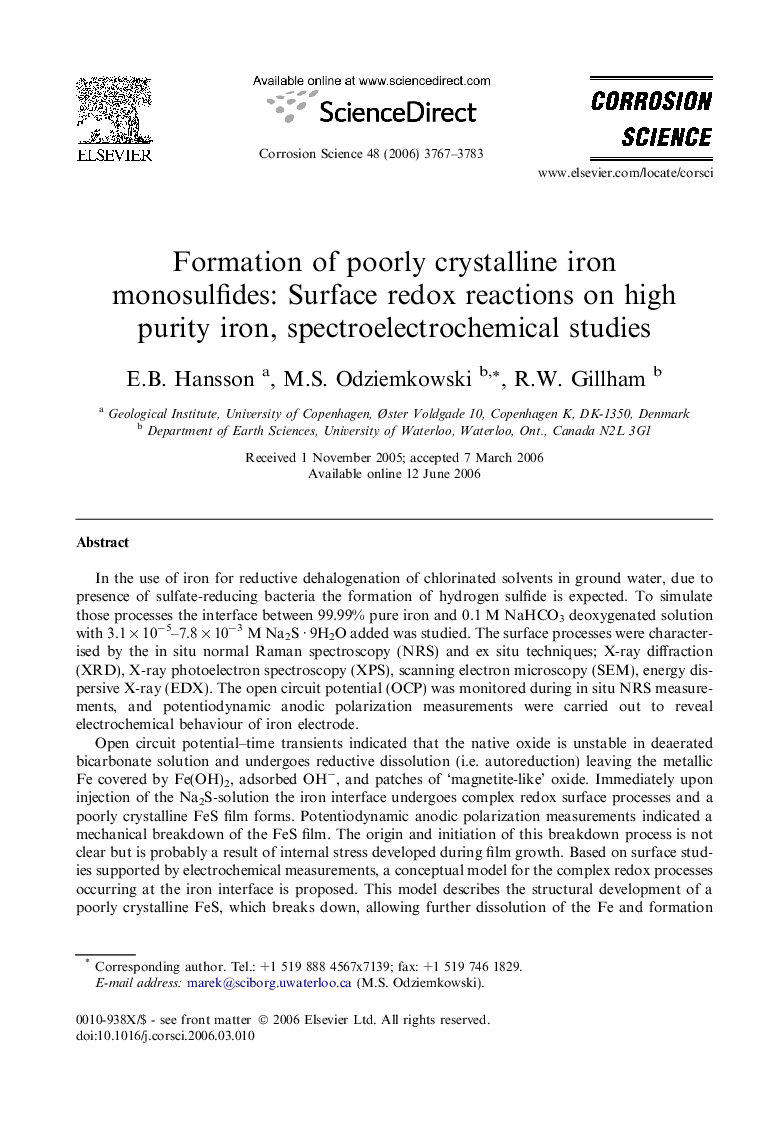| Article ID | Journal | Published Year | Pages | File Type |
|---|---|---|---|---|
| 1472319 | Corrosion Science | 2006 | 17 Pages |
In the use of iron for reductive dehalogenation of chlorinated solvents in ground water, due to presence of sulfate-reducing bacteria the formation of hydrogen sulfide is expected. To simulate those processes the interface between 99.99% pure iron and 0.1 M NaHCO3 deoxygenated solution with 3.1 × 10−5–7.8 × 10−3 M Na2S · 9H2O added was studied. The surface processes were characterised by the in situ normal Raman spectroscopy (NRS) and ex situ techniques; X-ray diffraction (XRD), X-ray photoelectron spectroscopy (XPS), scanning electron microscopy (SEM), energy dispersive X-ray (EDX). The open circuit potential (OCP) was monitored during in situ NRS measurements, and potentiodynamic anodic polarization measurements were carried out to reveal electrochemical behaviour of iron electrode.Open circuit potential–time transients indicated that the native oxide is unstable in deaerated bicarbonate solution and undergoes reductive dissolution (i.e. autoreduction) leaving the metallic Fe covered by Fe(OH)2, adsorbed OH−, and patches of ‘magnetite-like’ oxide. Immediately upon injection of the Na2S-solution the iron interface undergoes complex redox surface processes and a poorly crystalline FeS film forms. Potentiodynamic anodic polarization measurements indicated a mechanical breakdown of the FeS film. The origin and initiation of this breakdown process is not clear but is probably a result of internal stress developed during film growth. Based on surface studies supported by electrochemical measurements, a conceptual model for the complex redox processes occurring at the iron interface is proposed. This model describes the structural development of a poorly crystalline FeS, which breaks down, allowing further dissolution of the Fe and formation of FeOOH at the interface. Simultaneously and despite the existence of thick layer of FeS the entrance of hydrogen was evident as the typical hydrogen cracks in bulk of the iron material. This work shed the light on the complexity of the iron/sulfide solution interface, this knowledge is important to understand the kinetic of reduction of organic groundwater contaminants.
